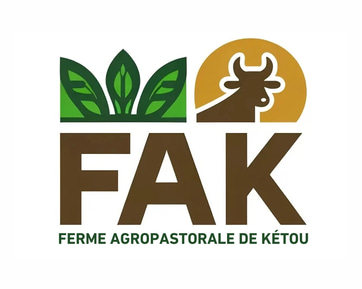Maximizing Profitability in Agribusiness: Strategies for Success
Crop and livestock production offer a balanced approach to maximizing profitability of agricultural operations. Effectively managing these two components helps reduce risks while enhancing profitability and improving the quality of the ecosystem.
Yeba A.
6/7/20242 min read
By implementing the following strategies, agropastoral farmers can effectively manage both crop and livestock operations, leading to optimized yields, reduced risks, and increased profitability. Balancing innovation with traditional knowledge ensures long-term success in this dynamic field.
1. Integrated Farming Systems: Synergy Between Crops and Livestock
Harness the natural synergy between crops and livestock to enhance productivity. For example, animal manure can be used as organic fertilizer for crops, while crop residues can serve as feed for animals. This closed-loop system reduces input costs and improves soil fertility, resulting in higher yields.
2. Diversification: Risk Management
Diversify both crops and livestock to spread risk and ensure a steady income flow throughout the year. Different crops and animals have varied growth cycles and market demands, so diversification helps protect against seasonal fluctuations and market volatility.
3. Efficient Resource Management: Water and Soil Management
Implement effective water management practices such as drip irrigation and rainwater harvesting to maximize water use. Additionally, focus on soil health through practices like crop rotation, cover cropping, and minimal tillage to maintain fertility and improve crop yields.
4. Adopting Modern Technology: Precision Agriculture
Use modern tools and technologies, such as GPS, drones, and soil sensors, to monitor crop health, manage livestock, and optimize resource use. Precision farming allows for more accurate application of inputs, reducing waste and boosting productivity.
5. Feed Optimization: Balanced Diet for Livestock
Ensure your livestock receives a balanced diet to improve their health and productivity. Invest in high-quality feed and consider growing fodder crops to reduce feeding costs. A well-fed animal will produce more milk, meat, or eggs, thus increasing profitability.
6. Market-Oriented Production: Target High-Demand Products
Focus on producing crops and livestock products that are in high demand in your local and regional markets. Stay informed about market trends and be flexible enough to adjust your production accordingly. Consider niche markets or value-added products to increase profit margins.
7. Value Addition: Processing and Packaging
Add value to your products through processing and packaging. For instance, instead of selling raw milk, consider producing cheese or yogurt. Processing extends the shelf life of products and allows you to command higher prices, boosting profitability.
8. Sustainable Practices: Eco-Friendly Farming
Adopt sustainable farming practices that protect the environment and reduce long-term costs. Practices such as agroforestry, soil conservation, and organic farming not only enhance land productivity but also attract environmentally conscious consumers willing to pay premium prices.
9. Financial Management: Cost Control and Investment
Keep a close watch on your farm's finances. Regularly analyze costs and returns to identify areas for improvement. Invest in high-return areas like infrastructure, quality seeds, and livestock breeds that can boost your overall productivity and profitability.
10.Continuous Learning and Adaptation: Stay Informed
The agricultural sector is constantly evolving with new technologies, practices, and market trends. Engage in continuous learning through training programs, workshops, and networking with other farmers. Being adaptable and well-informed will help you stay competitive and profitable.
